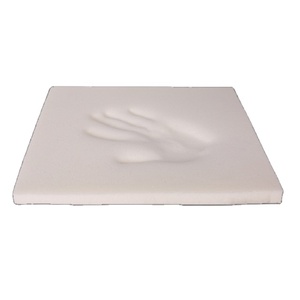(27349 products available)


















































































































































































































A rolled mattress foam is a foam mattress that can be rolled up and compressed for easy transportation and storage. This type of mattress is commonly used in online mattress shopping, where the mattress is shipped directly to the customer in a compact box.
Rolled mattresses are available in various types of foam, including memory foam, latex foam, and polyurethane foam. Each type of foam has unique properties and offers different levels of comfort and support.
Memory foam mattresses are popular for their ability to contour to the body's shape and relieve pressure points. They are available in different densities, ranging from soft to firm. Latex foam mattresses are made from natural or synthetic latex and are known for their durability and responsiveness. They offer a bouncier feel compared to memory foam. Polyurethane foam mattresses are made from a mixture of chemicals and are available in various densities and firmness levels. They are usually more affordable than memory foam and latex foam mattresses.
In addition to the foam type, rolled mattresses may also feature different foam layers. For instance, some have a top memory foam layer for comfort, a middle support foam layer for back support, and a base foam layer for stability. Others have a top gel-infused memory foam layer for coolness, a transition foam layer for balance, and a base foam layer for durability.
Aside from the material and layering, rolled mattresses differ in their construction. For instance, hybrid mattresses combine different foam types, such as memory foam and latex, or foam and pocket coils. They can have a combination of foam layers for support and comfort. Innerspring mattresses have a thin layer of foam on top, with innerspring coils providing the primary support. The foam layer is usually rolled, allowing the mattress to be compressed and providing support for the coils.
When analyzing mattress features, consider the foam's density, longevity, temperature, and how well it adapts to the form of your body. As foam technology advances, manufacturers combine various mattress foams to create a mattress with unique features and functions to meet every individual's sleeping needs.
The primary function of foam in a mattress is support, but it also plays a significant role in comfort. Support foam provides long-lasting support, ensuring proper spinal alignment during sleep. Support foam is made of high-density foam, offering a firm feel. Comfort foam provides the mattress's plush feel and softness. It conforms to the sleeper's body, providing relief from pressure points.
Features of foam in a mattress include:
There are various scenarios where foam mattresses can be used. These include:
Thickness and Density
The thickness and density of the foam are important factors to consider when choosing a mattress. Density affects firmness, support, and comfort. Foam density is classified into low-density foam (less than 3 pounds), medium density (3 to 5 pounds), and high-density foam (more than 5 pounds). Density is the weight of foam per cubic foot. A good foam mattress should have a depth of at least 10 inches, offering support and comfort while sleeping.
Durability and Quality of Materials
When purchasing foam mattresses, it is important to consider durability and materials used in construction. A durable foam mattress serves a purpose longer, offering value for money. High-quality foam materials are durable and long-lasting.
Support and Comfort
Support and comfort should be balanced when purchasing a foam mattress. A comfortable mattress offers a good night's sleep, while a supportive mattress keeps the spine aligned and the body supported while sleeping.
Temperature Regulation
Temperature regulation is important when choosing a foam mattress. Traditional memory foam tends to retain heat, which can be uncomfortable for some sleepers. Look for rolled mattresses with cooling features like gel infusion, open-cell structure, or breathable covers to regulate temperature while sleeping.
Motion Isolation
Motion isolation is important for couples. If one partner moves or gets out of bed, the other should not feel the movement. Look for foam mattresses with good motion isolation properties to minimize disturbances during sleep.
Edge Support
Edge support is important if one sleeps near the edge of the bed or shares it with a partner. Good edge support prevents sagging and maximizes the sleeping surface.
Allergies and Sensitivities
If one has allergies or sensitivities, it is important to choose a foam mattress that is hypoallergenic and resistant to dust mites, mold, and mildew. Look for mattresses with antimicrobial treatments or natural materials.
Q1. What are the drawbacks of foam mattresses?
A1. Foam mattresses tend to retain heat more than other materials, especially coils. It can cause heat to trap in the mattress, making it warm for sleepers. However, some foam mattresses have gel-infused foams or open-cell structures to prevent this. Others come with breathable covers to promote air circulation. Additionally, foam mattresses tend to have a sinking feeling. This is when the sleeper feels stuck in the mattress instead of sleeping on top of it. However, this sinking feeling depends on the foam's density. Lower densities usually give a sinking feeling, while higher densities have a responsive feel.
Q2. How long should a foam mattress be rolled?
A2. A foam mattress can be rolled for 30 to 60 days. This is if the manufacturer recommends it. Rolling a foam mattress for an extended period can damage its internal structure. On the other hand, if the manufacturer does not recommend it, the mattress should not be rolled at all.
Q3. What is the best foam thickness for a comfortable sleep?
A3. There is no definite answer to this question since different sleepers have unique preferences. Also, various brands manufacture their mattresses differently. Some brands offer extra comfort with a thick foam layer, while others use a thin layer. Generally, a comfortable foam thickness ranges from 8 to 12 inches.